Allan Moffat was the ideal villain for promoters in touring cars’ glory era of the ‘70s and ‘80s.
Allan Moffat was the ideal villain for promoters in touring cars’ glory era of the ‘70s and ‘80s.
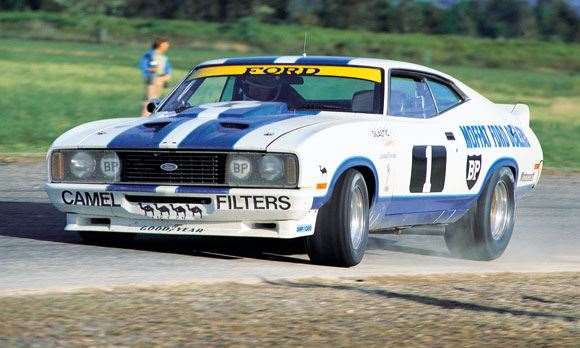 Remember Allan Moffat’s XC Cobra?
Remember Allan Moffat’s XC Cobra?Image: Chevron Library.
They loved to paint him as the big-shot Canadian ruthlessly dominating championships on his way to collecting “our” prize money. Indeed, unless you were of Ford inclination, Moffat finishing a nose ahead of Colin Bond in a limping, orchestrated end to the 1977 Hardie-Ferodo Bathurst 1000 in matching Falcon XCs was almost too much to handle. Moffat’s win that day was his fourth and last at The Mountain and coincided with his third Aussie championship. He had to wait until ’83 for another touring car mantle, but throughout that wait his strong, maple-leaf accent played a key role in maintaining an “international” flavour which those marketing men of Aussie touring cars were desperate to push as well.
Allan Moffat OBE never really was that villain, though. Inducted into the V8 Supercar Hall of Fame in 1999, the Saskatoon-born, naturalised Aussie has helped nurture the Australian motorsport scene. To this day, 70-year-old Moffat proudly fills directorial roles for the Australian Racing Drivers Club and the Australian Institute for Motor Sport.
With Bathurst run and won for another year, but with four races remaining on the V8 Supercar calendar for 2010, Inside Sport caught up with him while being shown the secrets to Ford’s success; in particular the Blue Oval’s hi-tech proving ground near Geelong. (We’d print what we saw, but they’d have to kill you and us)
What bought Allan Moffat Down Under – of all places – all those years ago?
“My father was a life-long employee of Massey-Ferguson, a Canadian tractor and machinery company based in Toronto. He was sent here in the early ‘60s to run Massey-Ferguson in Melbourne. I finished school here and when the powers that be asked my father to return to Toronto a few years later, I said, ‘Um, Dad, I kind of like a country that has a winter with no white stuff on the ground ... I’ll stay if you don’t mind.’ I was 22 when my parents moved back to Canada. It was hard to say goodbye, as I had lived with them all my life, but I really did like Australia – and we’d moved all around the world thanks to my Dad’s job.“With plenty of snow to contend with in Canada during winter months, I know I certainly wouldn’t have been racing around the back circuits of Toronto in -30-degree conditions had I returned home.”
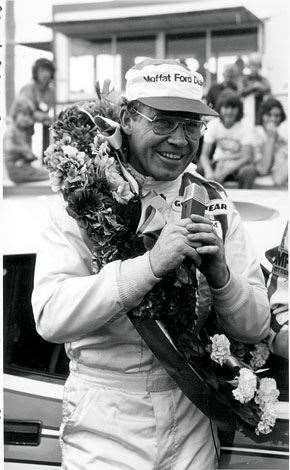 Allan Moffat 1977 Win
Allan Moffat 1977 WinImage: Chevron Library
Why is Australia so interested and good at motorsport?
“I think it’s this country’s love for the motor car; Australia followed in America’s footsteps, particularly when Ford
motor company in Detroit introduced its famous V8 engine in 1932. Aussies found the V8 was perfect for the long distances covered by drivers in this country.
“With the numbers of people who actively and regularly follow the V8s on Channel Seven, we’ve got terrific motorsport in this country; the contribution Seven made by televising the annual race at Bathurst in such a professional manner created a huge audience of motorsport fans.”
How differently were you treated by the Aussie racing fraternity in the early years because you were a foreign-born driver?
“No differently to anyone at the ‘base level’ – when we turned up to scrutineering and handed in our paper work. It was really the promoters later on who took advantage of the fact that a ‘cowboy’ from North America was out here. Particularly when I got my Trans Am Mustang, it was convenient to promote me as the guy in the ‘black hat’. The Mustang was such a popular car; I drove it so often, won races in it over four seasons. A lot of people saw that car in action. The fact I stayed here for more than five minutes meant I wasn’t a blow-in after a while. When I was hired by Ford in 1969 to be part of the GT-HO team, I got the privilege of going to Bathurst that year. It only took one weekend up there for me to decide I was going to spend a lot of my future trying to conquer that race.”
We hear all the time how great Bathurst is, but what makes the annual event so special?
“It’s special because of the tremendous atmosphere, the natural topography with the mountain in the background – it’s a stretch of the imagination to call it a ‘mountain’, but it’s an awfully big hill. A fascination of mine was that you had exactly two days a year to come good to practise on Saturday and race on Sunday. At least today that’s been changed where the drivers are there for the whole week, which provides an even better atmosphere.
“To climb up Mountain Straight and fly down Conrod Straight, the circuit was just made for a V8; particularly a V8 with some real torque and respectable horsepower for the day. Even in 1969 we were doing 265km/h down Conrod – that’s serious speed even by today’s standards. Unfortunately, brakes weren’t up to those speeds for long. In fact, they were almost an ‘optional extra’ for drivers of my era. Somewhere around 450m out from the bottom corner of Conrod Straight, you better have had your foot on the brake pedal, gently pulling the car up through the gears, otherwise you were going to be in the pits in a hurry with a melted clutch or a broken gearbox.”
The touring car mateship of your era is often lovingly recalled. Any moment which still leaves you with warm and fuzzy feelings?
“I was delighted when I was able to talk Colin Bond into becoming my team-mate in ’77-’78; the ‘77 finish was very much Colin’s contribution to be able to keep his car really right on the money the whole time and we had that fabulous finish. That was a delightful association.“I raced against Peter Brock for 25 years and in that time we had just two minor scrapes – scrapes that cutting polish got rid of back in the pits. That side of the sport doesn’t seem to be so efficiently promoted in today’s environment. I had a great deal of regard for Brockie. I was extremely sad when he passed away. I was conscious in the early ‘70s that he worked for Holden and I worked for Ford; I had my job, he had his ... but we didn’t have to crash into each other to prove the point. To be fair, though, V8 Supercars today is so much more competitive – the cars are designed to be as mechanically equal as possible, with each camp having exactly the same components.”
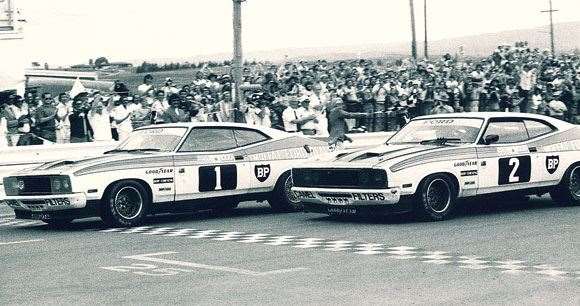 Moffat Bathurst 1977
Moffat Bathurst 1977Image: Chevron Library.
What was your most frightening crash?
“In 1986 – while co-driving with Peter in the HDT Commodore at Bathurst – I didn’t notice how close to the edge of the road I was drifting. Earlier in the day, another car had gone into a gravel pit on the right-hand side of McPhillamy Park and dug a nice rut in the sand. I slipped my right rear tyre into this rut and the car – at 170km/h – instantly turned left and went straight into the barrier on the left-hand side of the Skyline straight. But the car didn’t stop on the flat, it launched itself, with the front tyres shooting over the top of the barrier. I thought, ‘Truly, I’m going to be the first Australian astronaut,’ because all I could see was blue sky in front of me ... I knew below me was an 800-foot drop. Fortunately, the car’s gear box managed to really grab hold of the top lip of the barrier and the car fell back down onto the circuit. I didn’t get hurt, but I remember thinking, ‘Mmm, that would’ve been an awfully wild ride if I’d gone all the way over!”
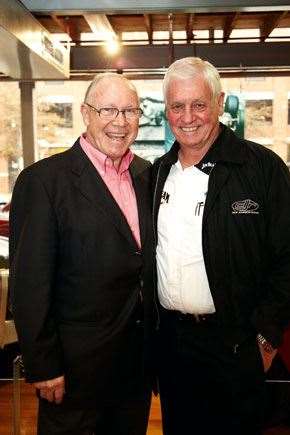 Allan Moffat Ford
Allan Moffat FordImage: Ford
The Homebush 500 is suddenly just around the corner. Were you surprised at the success of the inaugural race last year?
“I was there. It certainly had a spectacular take-off. I think it’ll grow and grow. However, there’s another sporting body talking about doing some modifications to the Olympic precinct for an enlarged track and field-focussed area; maybe it won’t be compatible for racing having the circuit being imposed on, but in any case, last year’s event was very successful considering the short period of time the organisers had to make it a success. All the people involved who got Homebush off the ground needed to be patted on the back.”The V8s will launch their 2011 season at Eastern Creek next year with a fan Open Day. Are you a fan of the much-maligned circuit?
“I have to speak with a forked tongue here, as a director of the Australian Racing Drivers Club, which I have been for over a dozen years – so yes and no. It’s not going to hurt to have a ‘Homebush’ and an ‘Eastern Creek’. The Creek is the home of the ARDC; there’s a huge financial investment in it and as such, plans for upgrades to grandstands, etc are in place. Eastern Creek isn’t going to die; it’s going to live in harmonious association with Homebush for a long time. If anything untoward ever did happen with the Homebush event, the people of Sydney should be happy to know there’s an ARDC trying to nurture, maintain and improve Eastern Creek for the next 50 years.”
Your son, James, is a V8 Supercar pilot these days, and Andrew has competed professionally in past years. What’s been your best racing advice to them?
“Very succinctly, not to get their ambitions mixed up with their abilities; if you’re feeling nervous about going through a corner, it’s for a reason – the car isn’t giving you the confidence you need. Also, never start trying to do 110 per cent behind the wheel when you only have a ‘90 per cent’ car.”
You must’ve noticed some howling errors from regular road-users in your time?
“We do have one problem in Australia – the vast distances we have to travel to get from city to city. The authorities, in good faith, have restricted the speed limit to 100-110, and travelling at 110 over a long drive from say, Sydney to Melbourne or Brisbane, is very tiring when attempting it in one hike. The potential to fall asleep is so high, and the ramifications of that are frightening.”
– James Smith
Related Articles
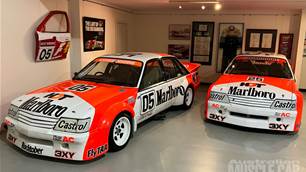
Big Banger Reunion
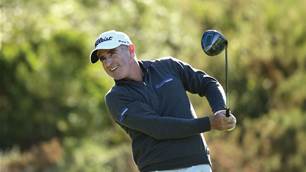
Video interview: Drinks With ... Matt Millar
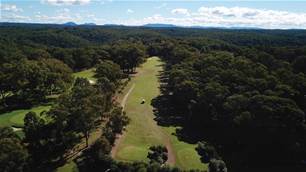
Golf Road Trip: Blue Mountains and Beyond
Latest News
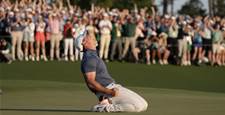
Feature Story: Moving the Needle

Nineteen NSW golf clubs set for major upgrades after huge funding win

Aussie teen Scaysbrook surges into U.S Women’s Amateur semi-finals
Most Read

Norris seals 2025 Formula 1 world title in Abu Dhabi

Oscar Piastri reflects on near-miss after standout 2025 Formula 1 season

Pirelli completes 2026 tyre testing as teams gather crucial data at Yas Marina






